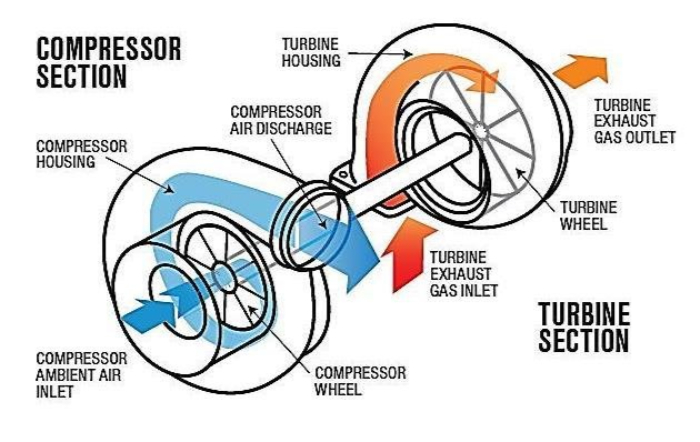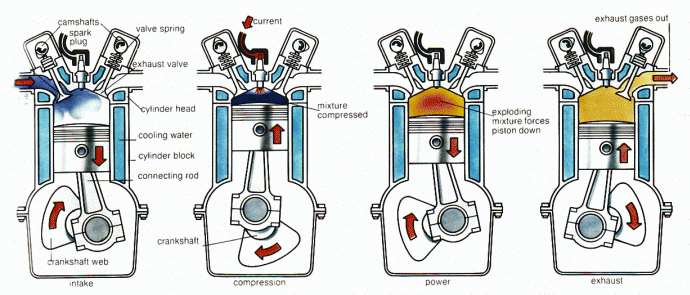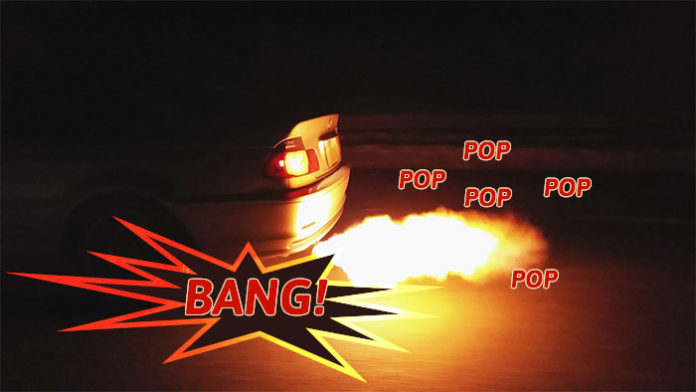Pops, crackles, burbles – the sound you usually hear coming from Porsches and other high end sports cars – results from inefficient combustion which occurs outside of the cylinders, usually in the exhaust. It doesn’t typically happen in “regular” cars, unless they are seriously worn out.
In performance cars, it usually happens as a result of the tuning. Some sports models come out of the factory with crackling exhausts, with brands like AMG and BMW M Series being some of the popular examples.
Turbocharged vehicles are often equipped with anti-lag systems, which produce after-fire to improve throttle response and acceleration.
Some launch control systems will also trigger a similar feature in order to keep the turbo spooled for maximum acceleration off the start.
For the sake of performance, we’re giving them a pass, if they promise not to go berserk at red lights.
Unfortunately, a certain segment of drivers finds it especially pleasurable to get the exhaust banging, so they apply specific tuning to make the engine produce the most obnoxious sounds possible.
Like these two:
We know, we’ll just encourage them, so let’s just focus on the science.
Turbocharged engines and lag
Turbochargers are really efficient, using the energy of the hot and pressurized exhaust gases to compress the incoming air, allowing the engine to create more power.
Their main drawback is they don’t immediately provide boost.

If the engine is running at low RPM or low throttle, the exhaust flow is not powerful enough to spin the turbine. So, each time you lift your foot off the gas – braking, shifting, whatever – the turbine will slow down, lose pressure and stop creating power.
When you press on the gas again, you first need to wait for it to spool back up, before you get any boost. This is what we refer to as turbo lag.
In comparison, mechanically driven superchargers are always spinning with the engine, therefore always generating pressure.
How do anti-lag systems work?
In modern gasoline engines, both the fuel delivery and spark ignition are precisely controlled and timed by the ECU. This makes it relatively easy to change the behavior of the engine, aka tune it.

Most of the time, the engine will cut the fuel supply when you’re off the throttle – you don’t want power when you’re decelerating.
But if you want the turbo to spin, you need exhaust gases. So, you have to keep the injectors working even at closed throttle.
Not all fuel will burn, and the remains will get pushed into the exhaust, where they will randomly mix with more oxygen and ignite from the surrounding temperature. That’s great for shooting flames and noises out the back, but it’s just random explosions.
To keep your turbo running, you need to also delay the ignition timing.
Normally, the spark fires off immediately after the piston reaches top-dead-center and starts traveling down. That produces the most useful work for driving the crankshaft.
If you delay the spark just enough, the air-fuel mixture will still be burning when the exhaust valves open. The flame front will continue into the exhaust manifold and power the turbine instead.
That’s exactly what you want. You’re off the gas, the engine is not powering the drivetrain and the turbo is spooled up, providing you the much-wanted boost. So, when you shift or come out of a corner, you’ve got full power.
There are other types of anti-lag systems, but this one involves just engine tuning and no extra hardware.
Drawbacks for your exhaust and turbo
If taken too far, this type of tuning can be destructive to the exhaust system and turbocharger.
View this post on InstagramHot shells droppin' out the semi-automatic @metroboomin
A post shared by ✞KIRO MANK🇪🇬 (@kiromank) on
Engines are designed to confine the burning air-fuel mixture within the cylinders. Once combustion starts to escape into the exhaust, it will subject all components to extreme pressure and temperature, which they are not intended to handle. Or at least not stock systems.
Over time, this will cause premature wear and failure of the turbocharger, exhaust system and especially the catalytic converter, if there is one.
Just watch this guy have a go at it. Skip to 0:56 for the interesting part.
Usually, tuners will increase the amount of fuel injected in order to decrease the combustion temperature, but that’s only marginally reducing the added stress.
Race cars accept this loss and go through frequent rebuilds – sometimes between each race – and that’s with heavy-duty components.
That said, most pop and crackle tunes on the market, like the ones that come with plug and play modules, are kept within reasonable boundaries, avoiding excessive wear of components and sometimes even maintaining the factory warranty.
Unfortunately, this means that you can keep making obnoxious noises and scaring people around. At least until the cops show up.
Performance car owners inevitably accept poor fuel economy and increased emissions. However, we’re obliged to mention that such a tune will dump large amounts of raw fuel and combustion byproducts straight into the atmosphere.
